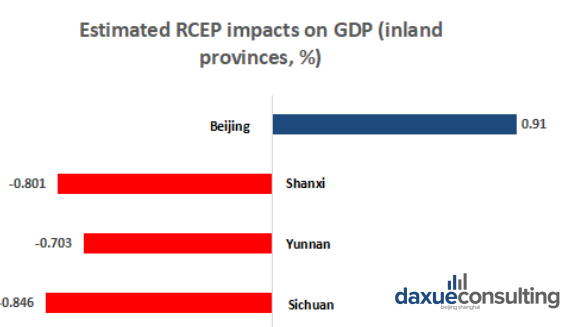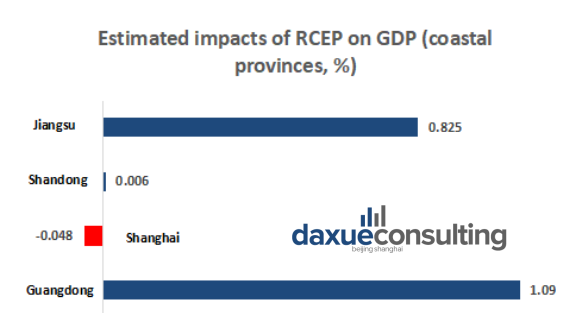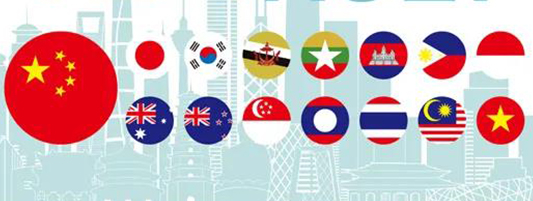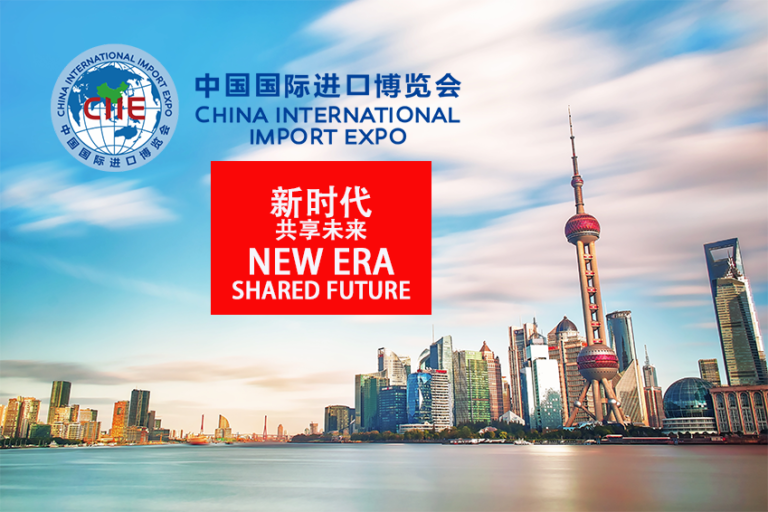2022 started with a bang with the official entry into force of the Regional Comprehensive Economic Partnership (RCEP, 区域全面经济伙伴决定). This free trade agreement comprises 15 Asia-Pacific countries (with 10 ASEAN members and 5 non-ASEAN members), with China taking the lead. Claimed as a victory for multilateralism and free trade amid the current global supply-chain disruptions, the RCEP aims to boost trade and put member countries back to the pre-COVID growth trajectory with a series of measures such as lowering the tariffs and widening the access for cross-national investment. The deal took effect in China, Australia, Brunei, Cambodia, Japan, Laos, New Zealand, Thailand, Singapore, and Vietnam on Jan 1st, with South Korea following on Feb 1st, while Indonesia, Malaysia, Myanmar, the Philippines have yet to ratify the treaty.
What exactly are RCEP’s impacts on China and its international trade? We will give you insights in the following article.
China is a major beneficiary of the world’s largest trade pact
About the RCEP
The RCEP is the world’s largest free trade deal, covering 15 countries, about 30% of global GDP, and nearly a third of the world’s population (some 2.2 billion people), with a net worth of 166.37 trillion RMB in terms of total economic size. By comparison, the United-States-Mexico-Canada trade agreement (USMCA) covers 28% of global GDP, while the European Union’s Single Market agreement is a distant third at 18% in 2021.
According to the common rules set by the RCEP, tariffs on more than 65 percent of China’s trade in goods (mostly in agriculture and manufacture sectors) with ASEAN, Australia, and New Zealand are expected to immediately reach zero, with 90% of trade tariffs within the bloc eventually being eliminated within two decades. RCEP also set liberalized rules around intellectual property, competition and e-commerce. In a recent analysis of the deal, the UN’s trade department UNCTAD said RCEP would boost intra-regional trade by 266.7 billion RMB per year and increase member countries’ GDP by 0.2% by 2030.
China as a major beneficiary
China is taking the leadership role in the RCEP with its giant economic size. RCEP’s impacts on China are expected by many to be huge, with its implementation marking a new milestone of China’s opening-up.
According to South China morning post, RCEP will make it easier for Chinese firms to use Southeast Asia as a production base and build production facilities with lower costs and can accelerate the diversification of supply chains in Asia. The pact can also streamline existing free-trade agreements and strengthen intra-regional trade linkages between China and other member countries. In addition, the leadership position will turn China into the center point of trade in the region, boosting the growth of exports and imports, which can, to some extent, alleviate China of the huge economic disruptions from COVID-19.
Under the umbrella of the RCEP, China has also reached its free-trade agreement with Japan, the world’s third-largest economy and China’s fourth-largest trading partner. ‘The two sides will substantially reduce tariffs on each other in many areas, such as machinery and equipment, electronic information, chemical industry, and light industrial textiles. In particular, 57 percent of China’s exports to Japan next year will immediately achieve zero tariffs, which will obviously promote trade’, said Yu Beilin, head of international economics and trade affairs at the commerce ministry. With the promotion of trade, the bilateral political relationships ruined by the pandemic and US-China tensions will be somewhat repaired. In the coming years, we can expect closer engagement, both on the government and non-government level, between China and Japan.
The RCEP also serves China’s strategic purpose of breaking out from the diplomatic containment policy imposed by the United States. When the United States withdrew from TPP in 2017, it signaled its reluctance to participate in multilateral trade agreements in the Asia Pacific region. Now with the establishment of the RCEP, the influence of the US will be further reduced, and China can decrease the economic reliance on the US by seeking alternative products from other RCEP members.
What lies beyond for the RCEP?
Despite many notable positive impacts on China, the RCEP has also been criticized by some experts as a shallow agreement in terms of inadequate tariff cuts, overly focusing on manufacturing products, and lacking substance on 21th-century trade issues like consumer protection and labor standards. However, the RCEP is positioned as a platform to discuss future trading rules instead of merely a symbolic trade deal even though it’s still in its infancy. In the short future, we can expect the scope of the RCEP’s rules to be evolving and gradually extending to the areas such as labor rights, environment, patent rights, and so on.
The RCEP’s impacts on China won’t be felt evenly
It’s undebatable that the establishment of the RCEP will leave many positive impacts on China’s economy as a whole by liberalizing trade barriers on goods and services and freeing up investment flows. However, since China is a country with a vast territory, there are great differences between industry sectors and geological locations, which determine their differences in terms of natural resources endowment, transportation cost, and positions in the global value chain. Therefore, it’s estimated that the impacts of RCEP won’t be felt evenly, with some industries and regions even potentially getting harmed by this deal.
Different impacts on GDP across provinces
Tsinghua University recently conducted research exploring the impacts of RCEP across provinces. By adopting the Input-Output Model and simulating the results using data regression techniques, they found a general trend (with some exceptions due to the influence of other relevant factors) that the GDP of coastal provinces is more likely to increase by a certain extent, while inland provinces might suffer a slight loss as a result of higher transportation costs and diversion of trade towards coastal provinces.


Different impacts on exports across industry sectors
Based on the simulated results of the same research, they found out that the hardest-impacted sectors, whether positively or negatively, are wood products, electronic equipment, metal products, research, and technological services. In summary, the RCEP has a certain role in promoting the export of agricultural and labor-intensive manufacturing products but has a restraining effect on technology-intensive and service products (with some exceptions due to the influence of other relevant factors). One possible explanation is that the tariff cuts on agricultural and manufacturing products are slightly higher than other products, which makes other products lose competitiveness to some degree.
A potential driver for the ratification of the paused Comprehensive Agreement on Investment (CAI) between Europe and China
In May 2021, the CAI Agreement between China and Europe was frozen by the European Parliament due to political and human rights concerns after approximately eight years of negotiations on the topics of market entry enlargement, fair competition promotion, industry subsidy, freedom of investment, and sustainable development. The act was approved by 599 votes in favor, 30 against, and 58 abstentions. The suspension of the CAI Agreement ended up ruining the bilateral economic engagement, restricting the potential growth and competitiveness of European enterprises in China.
With the ratification of the RCEP, the competitiveness of European products in China might take a further hit. According to MERICS, a Berlin-based research firm that specializes in international trade, while it’s true that European firms that source and process supplies from Asia can benefit from the improved environment of value chains, the reduction of trade costs and investment risks among the RCEP members might lead to trade diversion away from European products in China market and could see the competitiveness of European products significantly reduce. Therefore, in order to mitigate market losses and maintain its competitiveness, Europe has to find ways to seek closer economic cooperation with China, among which the paused CAI is the perfect go-to option. It won’t come as any surprise to see signs of revival of the CAI and Europe pivot other trade policies towards China market in the near future.
Key takeaways for foreign investors in the future
- The RCEP is the world’s largest trade agreement, covering roughly 30% of global GDP and one third of the world’s population. Its entry into force can significantly boost the trade among member countries.
- China is a huge beneficiary of this trade deal, as China can achieve cross-national trade and investment at lower costs under RCEP, and also the RCEP alleviates China from the current intense political pressure to a certain degree.
- The impacts of the RCEP in China are different across industry sectors and provinces. But the general trend is that the coastal provinces and agricultural and manufacturing sectors are likely to benefit the most. Foreigners should take this into account when they look for future investment opportunities in China.
- In order to maintain its market competitiveness, it’s likely that the European Union will seek closer economic partnership with China, such as passing the CAI Agreement which can grant European companies wider access into China market.





